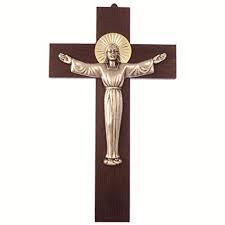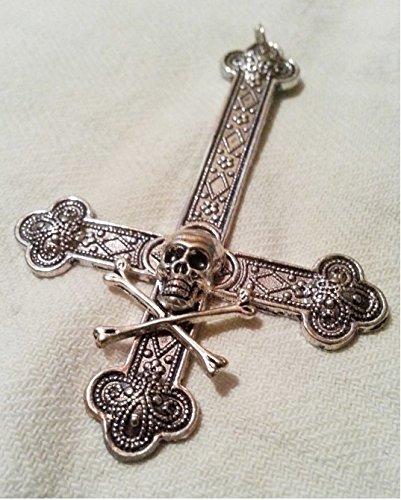-
Posts
4,862 -
Joined
-
Last visited
-
Days Won
15
Content Type
Profiles
Forums
Blogs
Gallery
Events
Store
Posts posted by peter monahan
-
-
The bar to the MC - double winner - may narrow it down a bit. The second rosette simply indicates that the ribbon it is on is for the 1914 Star, not the 1914-15. The Territorial Medal suggests that he 'stayed involved' between the Wars, so a secondment to a staff position for en elderly officer who may not have finished the Second War [ hence no WWII Victory?] seems reasonable.
BTW, officers were not given service numbers before 1920. And I think an officer's serial should be 6 digits, not 5 [and 8 for ORs].
0 -
The 'fancy silver buckles' are actually not uncommon for medals of that period: Crimea and Mutiny in particular. Issuing campaign medals was a relatively new thing and regulations hadn't caught up. Some soldiers sewed them directly to their tunics - with the obvious disadvantages that brought - but others, and not all officers, bought the buckles and wore the medals pinned on, often in clusters, as rules of precedence and so on were a thing of the future in 1860.
No opinion on the naming except to echo the cautions: 30 years ago somebody made a killing when they figured out how to 'officially impress' blank Crimea to members of the Light Brigade whose medals had not, till that point, come on the market. Sadly, it is impossible to date engraving except by style and some fakers are that clever.
 0
0 -
-
Many years ago I spent far too much time on weekends hanging about a store which sold medals and militaria. I even worked there one summer and an occasional customer, in Toronto, Canada in the 1980s, was a Lutheran minister who needed to renew the ribbons on his WWII German medals, which he wore on Remembrance Day [November 11th] and possibly on other occasions.
0 -
The qualifications for the 1939-45 War Medal are listed in Major Gordon's invaluable work as 'awarded to all full-time personnel of the armed forces wherever their service during the war was rendered. Operational and non-operational service counted, providing that it was twenty-eight days service or more.'
OTOH, yes, the 1939-45 Star requires him to have served outside the UK. Very interesting!
0 -
I've had my wrist gently slapped once, years ago, for suggesting someone try another forum for an answer, but this is a very specialized enquiry indeed. So, if none of our learned members chime in with an identification, you might try the British Badge Forum's 'Airborne, Elite and Special Forces' section.
0 -
Thanks, Tony. That helps.
The Canadian Expeditionary Force is/was a military oddity: The Minister of Militia, who hated the snotty-nosed British officers sent over every year to train 'our boys', was himself the embodiment of all the worst traits the Victorian officer corps: vindictive, grasping and stupid. When War was declared he basically ignored our tiny standing army and started over from scratch, raising the CEF. One of the few sensible things that was done was to assign, very early, number blocks, so every one of the 660,000 recruits had a unique identifier. There are a few of the older units which had to be 'counselled' to accept the new method and so there are a very few duplicate numbers, mostly men already serving, but by and lafrge the system worked well and is a real boon to researchers.

Peter
0 -
Sadly, I suspect that there is a third piece to this badge - the crown - now missing, which would help date it more closely, though I'm going to guess it is Victorian. Just a hunch based on the fastenings mostly. Perhaps one of our Gunner members can be more helpful.
By the Way, welcome to the GMIC!
Peter
0 -
I am interested by this post, as I belong to a living history group which portrays the Canadian Army Medical Corps, Great War period. I would have thought that a transfer from the RAMC to the RE would be unusual but presumably something in his civilian job /skills set suggested to the authorities that he would be more useful on railways or canals than as a stretcher bearer or medical aide.
Tony, I'm also very interested to see that he was given a new serial number. Was that common? In the Canadian Expeditionary Force men were re-assigned on reaching England, or even in Canada, but the originally issued serial stayed with the soldier throughout his service in the vast majority of cases, which can be confusing. Each of the 240+ battalions was given a block of numbers to issue, to avoid duplication, but as many units were broken up form reinforcements on reaching the UK, so the block prefix only really tells one which battalion he enlisted in.
0 -
18 hours ago, Wessel Gordon said:
I also bought a secondhand copy from them of one of my favorite books: ''River God'' by Wilbur Smith...but that bit didn't involve BidorBuy.
I think I own all of Smith's earlier books - the Courtney saga, 'Shout At the Devil' and so on. Never got as interested in his Egyptian stuff.
0 -
I'm offended! Not sure about what yet, but offended. Details to follow!
 0
0 -
21 hours ago, Dave Wilkinson said:
I'm puzzled! This is a piece of military equipment and has nothing whatsoever to do with policing - let alone British policing. Incidentally, what is a "perp"? Oh, do you mean an offender?
Dave.
The thread began as one on a possible 'police truncheon', now identified as a trench club. So...
Yes, 'perp' is slang - North American only slang, I suppose - for 'perpetrator' [suspect/arrestee/criminal].
 0
0 -
I do admire a man who's thorough! Lovely photos and great research. Thanks for sharing it, Rusty.
0 -
Yes, I'm afraid that even in the 'good old days' of policing, one's sergeant would likely take a dim view of any implement which would leave such easily identifiable marks on a 'perp'.
Bobbies were and are, of course, allowed to use force if absolutely necessary, but are not to enjoy it nor, in a worst case scenario, do so in a way which might leave them open to civil action. I can't imagine many cases in which even the toughest 'beak' would allow that 'a club wif nails in' was appropriate for a peace officer!
 0
0 -
This member does research on SA gongs. Perhaps she can tell you, without much/any cost. Worth a try?
 0
0 -
Just don't use paper towelling, either to polish or wrap them in, as it's rotten with sulphur and will tarnish the medals quick as be damned.
0 -
The Women's Auxiliary Corps (India) was established in 1942 and by 1944-45 numbered about 10,000 officers and enlisted ranks. Presumably a good number of these would have qualified for the War Medal 1939-45, as the qualification period was 28 days full time service.
Full-time paid members of the specially approved colonial and other military forces, militarised police or militarised civilian bodies which were eligible to qualify for campaign stars, were also eligible to qualify by 28 days of service during the qualifying period as laid down for the force concerned: Wikipedia.
Alan Harfield, an expert on the British Indian Army, has written an excellent article, which you can read for free or download for a small price here:
Journal of the Society for Army Historical ResearchVol. 83, No. 335 (Autumn 2005), pp. 243-254 (12 pages)The download link is to a group photo of No. 2 Company, Bombay WAC(I)0 -
MOZAMBIQUE
in Africa
Sadly, unusual ribbons are very difficult to source, especially for newer awards. OMSA - the Orders & Medals Society of America - has a 'ribbon bank' where, I think, samples of various ribbons can be obtained, but I have no idea how or what kind of resources they have.
The other route might be to identify the company who made the award and approach them directly [by mail]. They won't likely sell you an award but may suggest how you can get ribbons.
How's your Portuguese?

Peter
0 -
-
Hi Von Thronstahl
I'm a bit under the weather today but another quick look at the first postcard suggests a second reference to the 'parents' and 'hope for a better season/time', so, no, no earthshaking revelations here.
 0
0 -
Here is a bit of the first card translated. The handwriting is a real challenge, and my French is mediocre at best, so no guarantees I'm getting it right.
Pont a ?? [?? Bridge] the 5th of November, 1915; The Machine Gun Section, 47th Regiment, 2nd Battalion.
Address: Mademoiselle Andree Mollandre,[ indecipherable], Sienne and Oise Department [Province]
Message: ‘Ma cheri’ [‘Jodie’ ??? a pet name?]. As I wrote to your parents, I would be in Biceli ?? on Saturday August 13th.
0 -
It is definitely brass and not overpainted white metal or an anodized one with the silver stripped off? Very curious indeed.
0 -
That is interesting. I know that any number of the Canadian battalions sent to England in 1914-16 had badges made privately there, either with or without official permission, and that many of them were stamped with makers names on the reverse.
I believe that this was done because there was a shortage of the badges to units who were raised hurriedly in Canada and sent overseas straightway - perhaps as few as one per man, which wouldn't accommodate several sets of headgear. I also suspect that many units had 'smart looking' versions of the badges made by private purchase after the Canadian made ones were deemed too crude for walking out and such.
Nice find!
0 -
It is a fairly obvious symbol to connect with soldiering - and pirates, I suppose - as death is part of the whole package. The Elizabethans were fond of including skulls in artwork too, as a reminder of Man's mortality.
0






Order of the Garter
in Great Britain: Orders, Gallantry, Campaign Medals
Posted
It is a lovely looking piece indeed. I'm afraid I can't comment on age or authenticity but I noticed that the sash seems to have a lighter blue section at the top. Trick of the light or has it been added in to the darker ribbon?